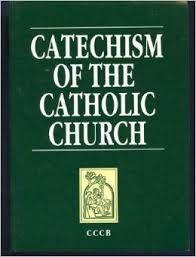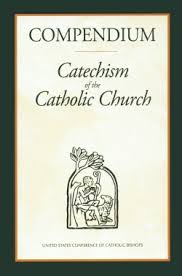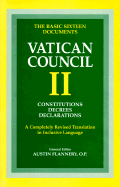Learn the fundamental truths of the Catholic Church.

"This catechism aims at presenting an organic synthesis of the essential and fundamental contents of Catholic doctrine, as regards both faith and morals, in the light of the Second Vatican Council and the whole of the Church's Tradition. Its principal sources are the Sacred Scriptures, the Fathers of the Church, the liturgy, and the Church's Magisterium. It is intended to serve "as a point of reference for the catechisms or compendia that are composed in the various countries". This work is intended primarily for those responsible for catechesis: first of all the bishops, as teachers of the faith and pastors of the Church. It is offered to them as an instrument in fulfilling their responsibility of teaching the People of God. Through the bishops, it is addressed to redactors of catechisms, to priests, and to catechists. It will also be useful reading for all other Christian faithful." CCC 11-12
 There are three principal characteristics of the Compendium: the close reliance on theCatechism of the Catholic Church; the dialogical format; the use of artistic images in the catechesis. The Compendium is not a work that stands alone, nor is it intended in any way to replace theCatechism of the Catholic Church: instead, it refers constantly to the Catechism by means of reference numbers printed in the margins, as well as by consistent reliance on its structure, development and contents. In fact, the Compendium is meant to reawaken interest in and enthusiasm for the Catechism, which, in the wisdom of its presentation and the depth of its spirituality, always remains the basic text for catechesis in the Church today.
There are three principal characteristics of the Compendium: the close reliance on theCatechism of the Catholic Church; the dialogical format; the use of artistic images in the catechesis. The Compendium is not a work that stands alone, nor is it intended in any way to replace theCatechism of the Catholic Church: instead, it refers constantly to the Catechism by means of reference numbers printed in the margins, as well as by consistent reliance on its structure, development and contents. In fact, the Compendium is meant to reawaken interest in and enthusiasm for the Catechism, which, in the wisdom of its presentation and the depth of its spirituality, always remains the basic text for catechesis in the Church today.
Like the Catechism, the Compendium has four parts, corresponding to the fundamental laws of life in Christ. The first part, entitled “The Profession of Faith”, contains a synthesis of the lex credendi, the faith professed by the Catholic Church, as expressed in the Apostles’ Creed which is further elaborated by the Nicene-Constantinopolitan Creed. In the liturgical profession of the Creed, the Christian assembly keeps the principal truths of the faith alive in memory. The second part, entitled “The Celebration of the Christian Mystery”, presents the essential elements of the lex celebrandi. The proclamation of the Gospel finds its authentic response in the sacramental life, through which Christians experience and witness, in every moment of their existence, the saving power of the paschal mystery by which Christ has accomplished our redemption.
The third part, entitled “Life in Christ”, recalls the lex vivendi, through which the baptized manifest their commitment to the faith they have professed and celebrated, through their actions and ethical choices. The Christian faithful are called by the Lord Jesus to act in a way which befits their dignity as children of the Father in the charity of the Holy Spirit. The fourth part, entitled “Christian Prayer”, summarizes the lex orandi, the life of prayer. Following the example of Jesus, the perfect model of one who prays, the Christian too is called to the dialogue with God in prayer. A privileged expression of prayer is the Our Father, the prayer that Jesus has taught us.
A second characteristic of the Compendium is its dialogical format, reflecting the ancient catechetical literary genre of questions and answers. The idea is to reproduce an imaginary dialogue between master and disciple, through a series of incisive questions that invite the reader to go deeper in discovering ever new aspects of his faith. The dialogical format also lends itself to brevity in the text, by reducing it to what is essential. This may help the reader to grasp the contents and possibly to memorize them as well.
A third characteristic is the inclusion of some artistic images which mark the elaboration of theCompendium. These are drawn from the rich patrimony of Christian iconography. The centuries-old conciliar tradition teaches us that images are also a preaching of the Gospel. Artists in every age have offered the principal facts of the mystery of salvation to the contemplation and wonder of believers by presenting them in the splendour of colour and in the perfection of beauty. It is an indication of how today more than ever, in a culture of images, a sacred image can express much more than what can be said in words, and be an extremely effective and dynamic way of communicating the Gospel message.

Constitutions
Dei Verbum: DOGMATIC CONSTITUTION ON DIVINE REVELATION
"Hearing the word of God with reverence and proclaiming it with faith, the sacred synod takes its direction from these words of St. John: 'We announce to you the eternal life which dwelt with the Father and was made visible to us. What we have seen and heard we announce to you, so that you may have fellowship with us and our common fellowship be with the Father and His Son Jesus Christ' (1 John 1:2-3)."
Lumen Gentium: DOGMATIC CONSTITUTION ON THE CHURCH
"Christ is the Light of nations. Because this is so, this Sacred Synod gathered together in the Holy Spirit eagerly desires, by proclaiming the Gospel to every creature,(1) to bring the light of Christ to all men, a light brightly visible on the countenance of the Church."
Sacrosanctum Concilium: CONSTITUTION ON THE SACRED LITURGY
"This sacred Council has several aims in view: it desires to impart an ever increasing vigor to the Christian life of the faithful; to adapt more suitably to the needs of our own times those institutions which are subject to change; to foster whatever can promote union among all who believe in Christ; to strengthen whatever can help to call the whole of mankind into the household of the Church. The Council therefore sees particularly cogent reasons for undertaking the reform and promotion of the liturgy."
Gaudium et Spes: PASTORAL CONSTITUTION ON THE CHURCH IN THE MODERN WORLD
"The joys and the hopes, the griefs and the anxieties of the men of this age, especially those who are poor or in any way afflicted, these are the joys and hopes, the griefs and anxieties of the followers of Christ. Indeed, nothing genuinely human fails to raise an echo in their hearts."
Declarations
Gravissimum Educationis: DECLARATION ON CHRISTIAN EDUCATION
"The Sacred Ecumenical Council has considered with care how extremely important education is in the life of man and how its influence ever grows in the social progress of this age."
Nostra Aetate: DECLARATION ON THE RELATION OF THE CHURCH TO NON-CHRISTIAN RELIGIONS
"In our time, when day by day mankind is being drawn closer together, and the ties between different peoples are becoming stronger, the Church examines more closely her relationship to non-Christian religions."
Dignitatis Humanae: DECLARATION ON RELIGIOUS FREEDOM
"A sense of the dignity of the human person has been impressing itself more and more deeply on the consciousness of contemporary man, and the demand is increasingly made that men should act on their own judgment, enjoying and making use of a responsible freedom, not driven by coercion but motivated by a sense of duty."
Decrees
Ad Gentes: DECREE ON THE MISSION ACTIVITY OF THE CHURCH
Presbyterorum Ordinis: DECREE ON THE MINISTRY AND LIFE OF PRIESTS
Apostolicam Actuositatem: DECREE ON THE APOSTOLATE OF THE LAITY
Optatam Totius: DECREE ON PRIESTLY TRAINING
Perfectae Caritatis: DECREE ON THE ADAPTATION AND RENEWAL OF RELIGIOUS LIFE
Christus Dominus: DECREE CONCERNING THE PASTORAL OFFICE OF BISHOPS IN THE CHURCH
Unitatis Redintegratio: DECREE ON ECUMENISM
Orientalium Ecclesiarum: DECREE ON THE CATHOLIC CHURCHES OF THE EASTERN RITE
Inter Mirifica: DECREE ON THE MEDIA OF SOCIAL COMMUNICATIONS
Documents of Vatican Council II

The New American Bible, Revised Edition (NABRE)Released on March 9, 2011, the New American Bible, Revised Edition (NABRE) is the culmination of nearly 20 years of work by a group of nearly 100 scholars and theologians, including bishops, revisers and editors. The NABRE includes a newly revised translation of the entire Old Testament (including the Book of Psalms) along with the 1986 edition of the New Testament.
USCCB Publishing does not sell Bibles. For a good selection of Catholic Bibles, visit a Catholic bookstore.














